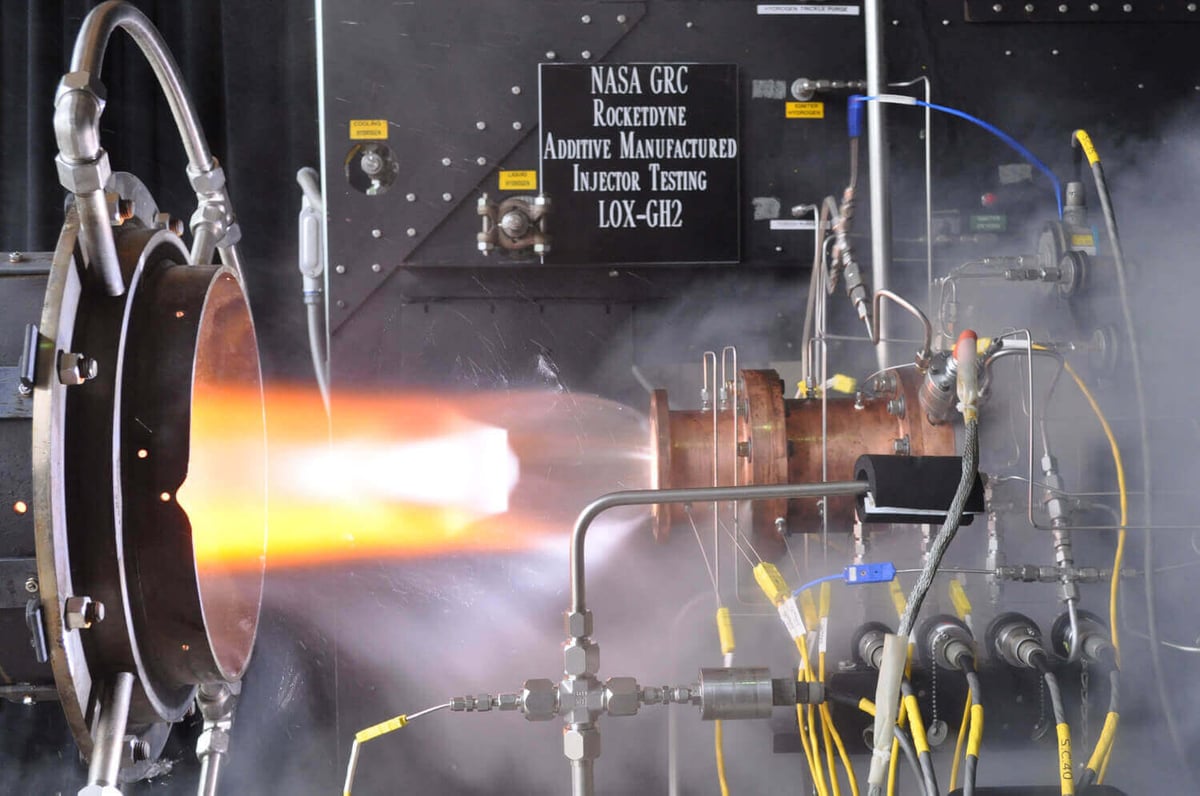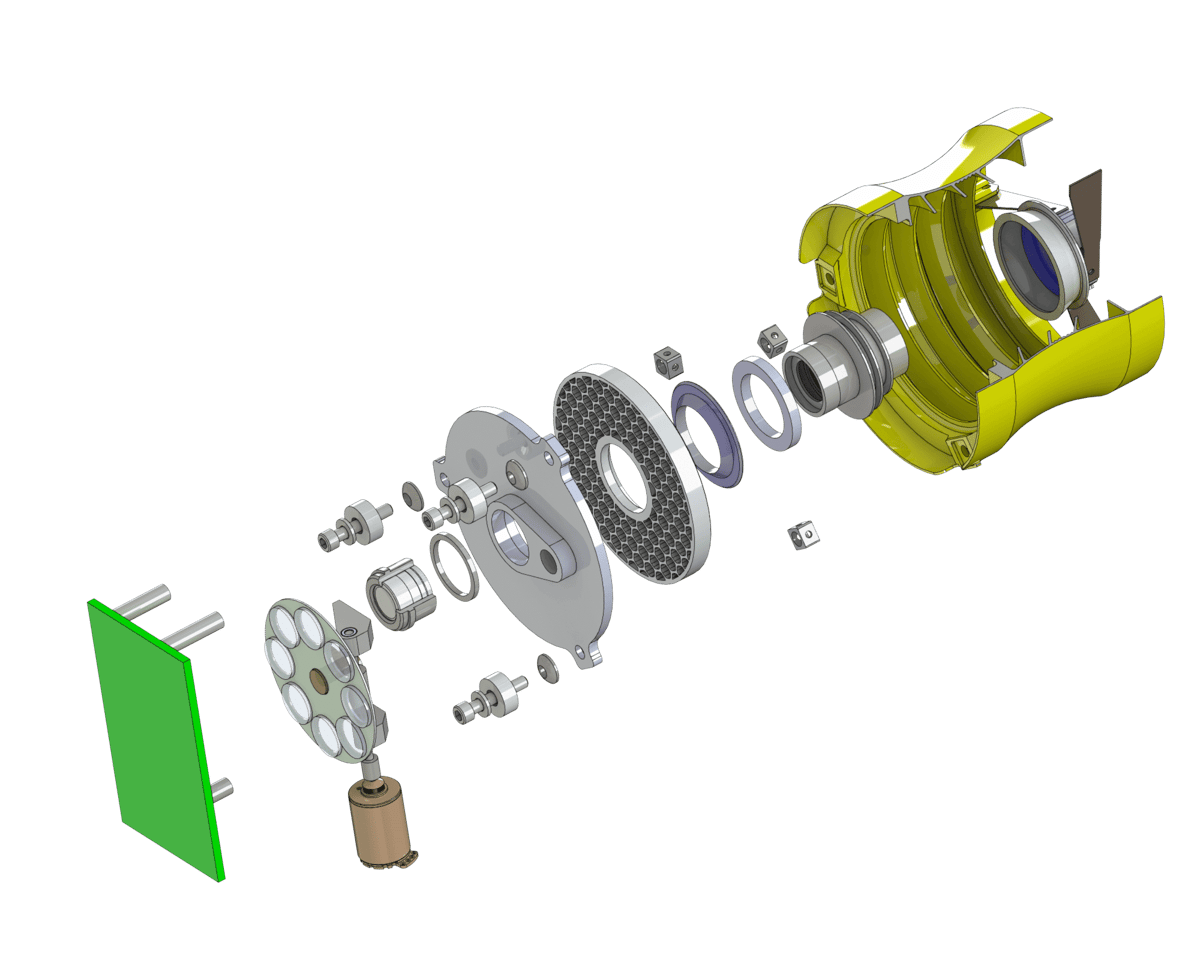Before NASA made 3D printing in a micro-gravity vacuum environment (space) a science fact, the space organization was busy pushing the additive manufacturing process into new realms here on earth. Here are some recent advances in additive manufacturing that prove that NASA is making the most of 3D printing.
Mars Rover 2.0

Forty-six years ago this July, the first human set foot on the moon. Since then, talk of going back – and even farther – has dominated the space exploration conversation. In recent years, advances have been made that could prove critical to taking another big step: putting a human on Mars.
We’ve all heard of NASA’s current batch of Mars rovers (Spirit and Opportunity), but NASA is also developing a new rover named Desert Research and Technology Studies (RATS) for possible inclusion in a future mission to Mars. The RATS rover is significantly different from any rover NASA has built so far.
- The Desert RATS is currently the size of a Hummer. And before you get all bent out of shape wondering why it has to be that large, keep in mind that the Desert RATS is the first rover to sport a pressurized cabin that supports human life.
- Desert RATS is the first rover to be built of 3D printed parts. In cooperation with Stratasys NASA worked to produce about 70 parts that make up the Desert RATS rover. Stratasys used fused deposition modeling (FDM) to form materials such as acrylonitrile butadiene styrene (ABS), polycarbonate-acrylonitrile butadiene styrene (PC-ABS), and other polycarbonate materials into flame-retardant vents and housings, camera mounts, large pod doors, the front bumper, and many other custom fixtures.
According to Stratasys, “FDM offers the design flexibility and quick turnaround to build tailored housings for complex electronic assemblies. For example, one ear-shaped exterior housing is deep and contorted, and would be impossible – or at least prohibitively expensive – to machine.”
NASA engineers chose 3D printing for various reasons including cost, weight, and strength of finished product. “You always want it to be as light as possible, but you also want it to be strong enough,” says NASA test engineer Chris Chapman. [1], [2]
3D printed optics

NASA aerospace engineer Jason Budinoff is building both a camera and a telescope using 3D manufactured components. While this does not sound like anything ground-breaking, Budinoff’s next step is to produce the first 3D printed telescope mirror.
Before the 3D printed mirror can become a reality, Budinoff will build a 50mm (2in) camera; its outer tube, baffles, and optical mounts will be printed as a single structure. This camera will be fitted with conventionally manufactured mirrors and lenses, mounted in a CubeSat, and subjected to vibration and thermal-vacuum testing later this year.
The second step toward a 3D printed mirror will come in the form of a 350mm (14i) dual-channel telescope that will be created using additive manufacturing – just like its smaller cousin.
Then comes the real test. Budinoff hopes to demonstrate that he can use powdered aluminum to produce 3D manufactured optics. Under normal circumstances this would be extremely difficult, if not impossible, because aluminum is a porous metal. However, Budinoff believes that after 3D manufacturing an appropriately sized aluminum object, he can subject it to a process called isostatic pressing – simultaneously heating the object and increasing the pressure to 15,000 psi – which will “squeeze” the mirror to reduce the surface porosity and render a polished, mirror-like surface.
The development of the camera, telescope, and optics using additive manufacturing will be invaluable to anyone who builds optical instruments. “I think we can demonstrate an order-of-magnitude reduction in cost and time with 3D printing,” concludes Budinoff. [3], [4]
3D printed rocket engines
A rocket engine injector, constructed by Aerojet Rocketdyne using additive manufacturing techniques, recently passed an important hot-fire test. The successful completion of this test moves 3D printed parts one step closer toward being used in rocket engines.
While 3D printing has been used in the past to produce parts for space vehicles, it is usually restricted to less critical components. According to Jeff Haynes, additive manufacturing program manager at Aerojet Rocketdyne, “the injector is the heart of a rocket engine and represents a large portion of the resulting cost.” Indeed, injectors may take a year or more to build but, using additive manufacturing technology, Aerojet Rocketdyne can reduce build times to less than four months while simultaneously cutting overall cost by 70 percent.
Aerojet Rocketdyne used selective laser sintering (SLS) to liquefy and fuse metallic powder into the required specifications. The injector was then sent to NASA’s Glenn Research Center in Cleveland, Ohio, where it underwent the crucial hot-fire tests. Upon successful completion of the tests, Carol Tolbert, Manufacturing Innovation Project manager, said, “These successful tests let us know that we are ready to move on to demonstrate the feasibility of developing full-size, additively manufactured parts.” [5] [6]
So whether it’s 3D printing in micro-gravity, 3D printing in the vacuum of space, or relying more and more heavily on 3D printed parts here on Earth, NASA is pushing the edge of innovation in the hopes of sending a human farther from our planet than ever before.
[1] https://www.stratasys.com/resources/case-studies/aerospace/nasa-mars-rover
[2] https://www.diyspaceexploration.com/3dprinting/
[3] https://www.nasa.gov/content/goddard/nasa-engineer-set-to-complete-first-3-d-printed-space-cameras/index.html#.VCRy2_ldWuS
[4] https://www.diyspaceexploration.com/3dprinting/
[5] https://www.space.com/22001-3d-printed-rocket-engine-part-test.html
License: The text of "NASA is making the most of 3D printing" by All3DP is licensed under a Creative Commons Attribution 4.0 International License.